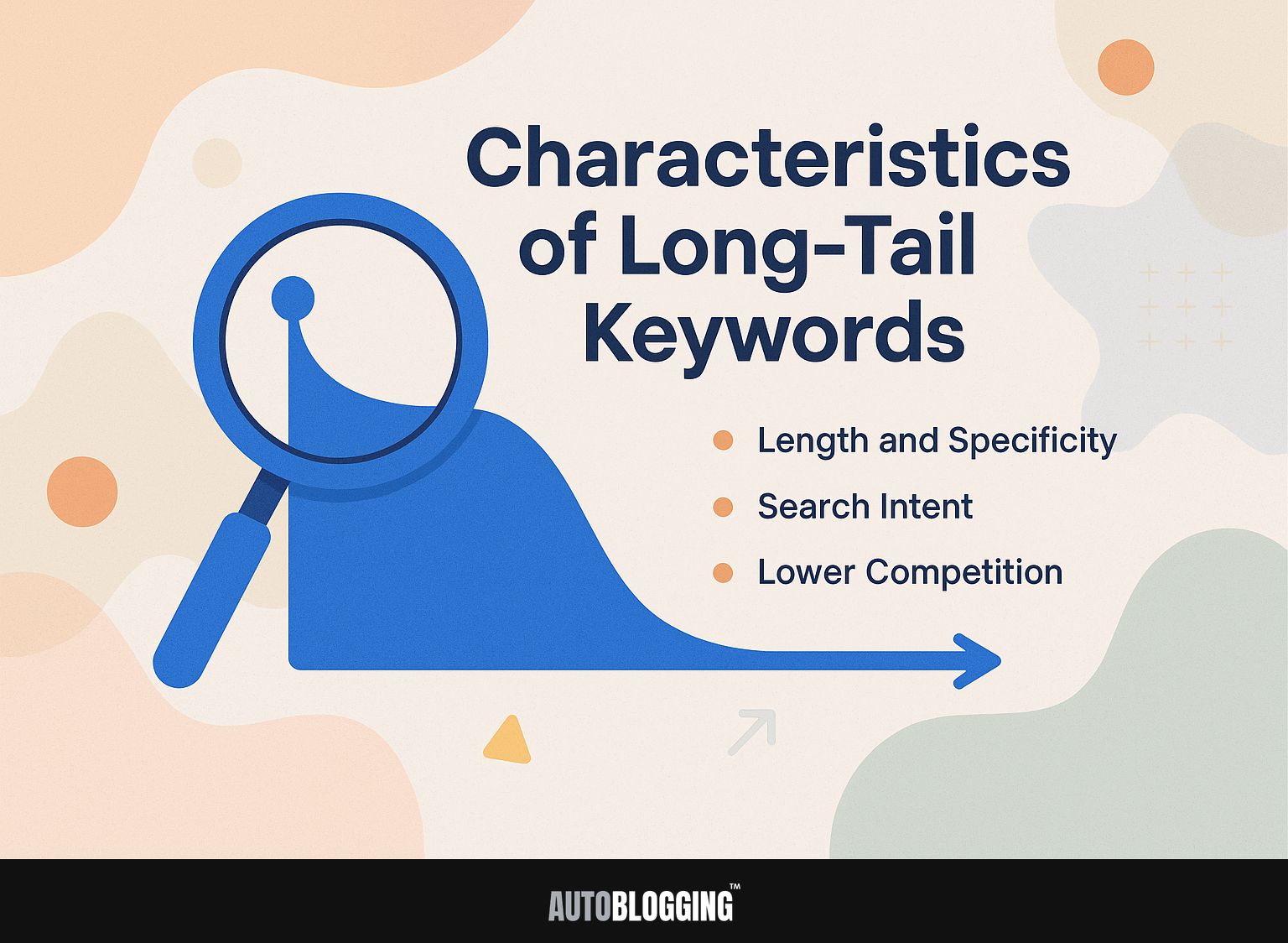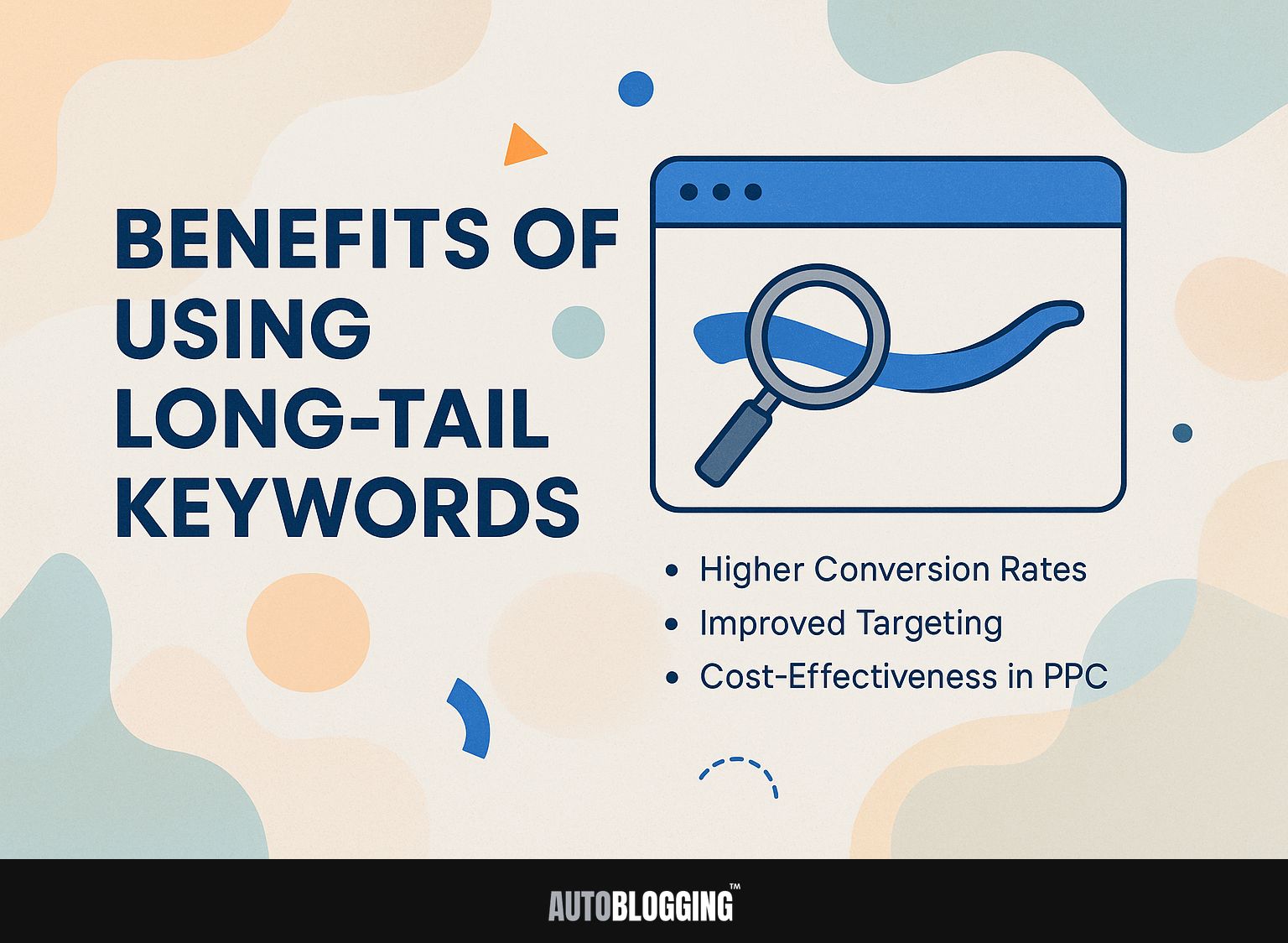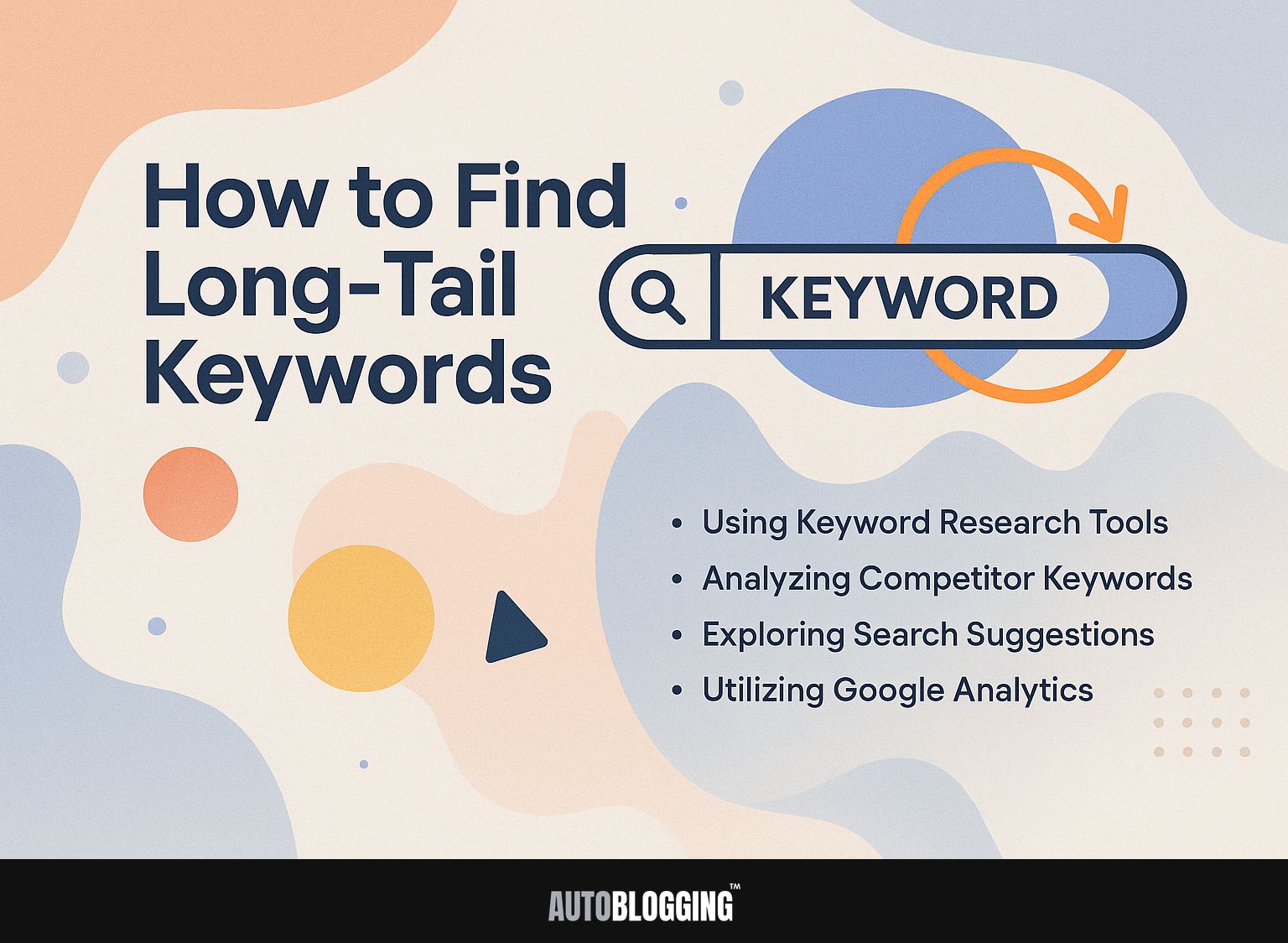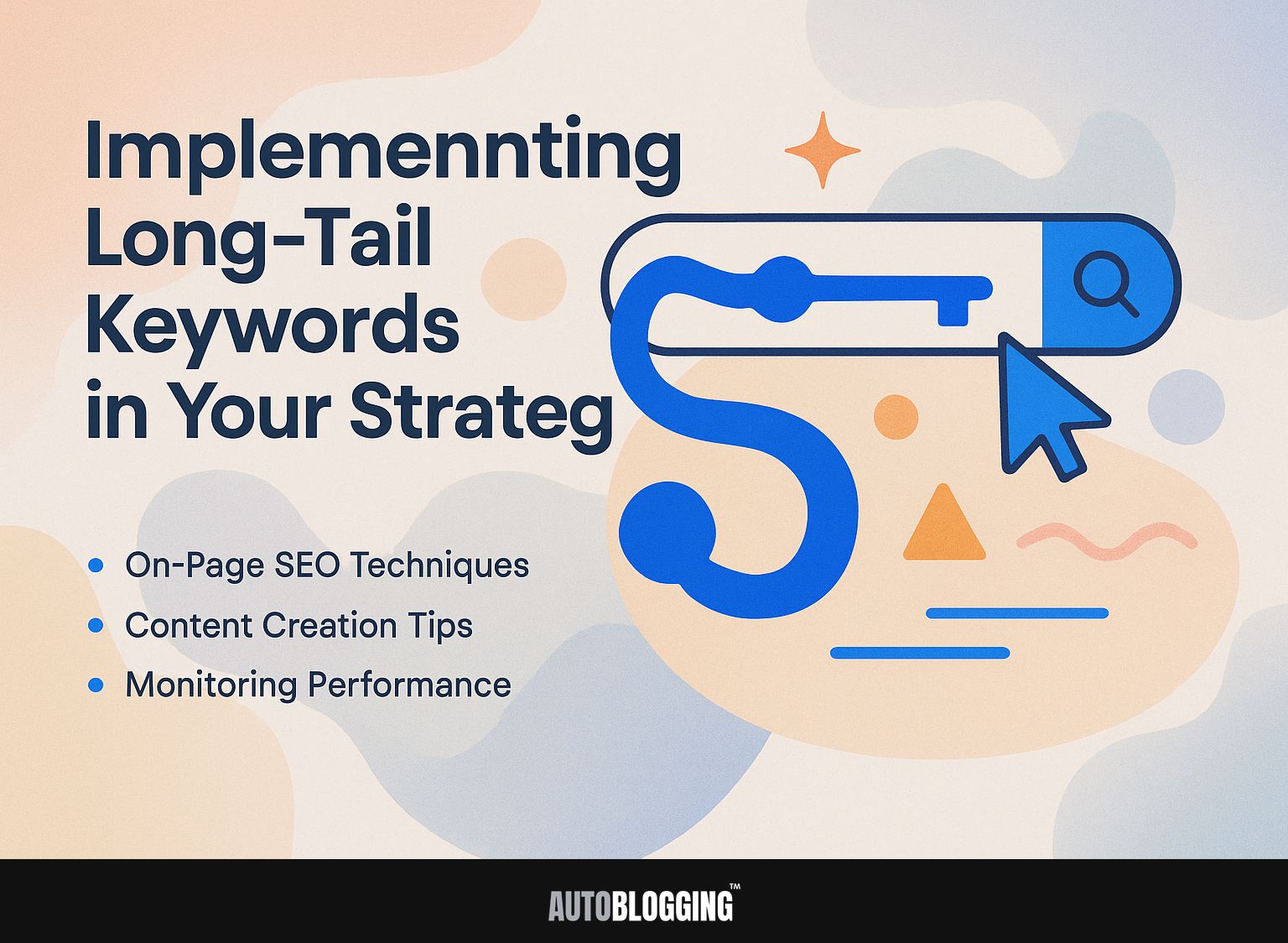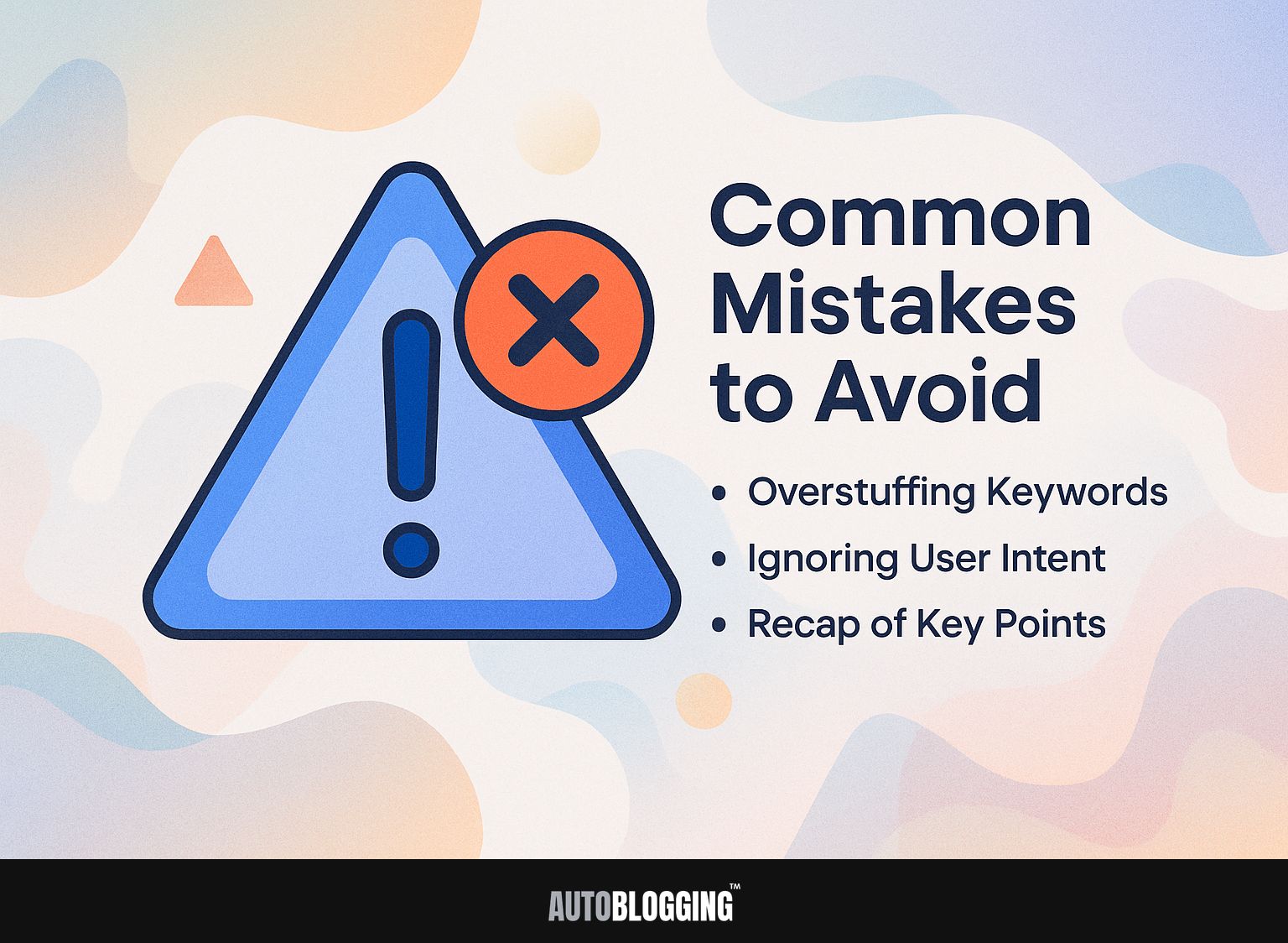
Use long-tail keywords to improve your search marketing plan! These particular phrases attract specific visitors and meet the individual needs of users searching online. In this article, we will explain what long-tail keywords are, discuss their advantages, and show you how to find them effectively, helping you increase your search traffic and get more visibility on Google. Prepare to improve your SEO skills with practical tips!
Key Takeaways:
- Long-tail keywords are longer and more specific search terms with lower competition, providing higher conversion rates and improved targeting for SEO and PPC strategies.
- To find long-tail keywords, use keyword research tools, check what competitors are doing, look at search suggestions, and use Google Analytics.
- To effectively implement long-tail keywords, use on-page SEO techniques, create relevant content, and regularly monitor performance while avoiding common mistakes like keyword overstuffing and ignoring user intent.
Contents
1. Definition of Long-Tail Keywords
Long-tail keywords are phrases that typically contain three or more words, focusing on specific search intents, such as ‘comfortable dress shoes’ or ‘buy a laptop’.
Unlike short-tail keywords, which may be just one or two words like ‘shoes’ or ‘laptops’, long-tail keywords generally attract lower search volume but often lead to higher conversion rates.
When someone looks for ‘best running shoes for flat feet,’ they already have a clear idea of what they need and are almost ready to buy. Long-tail keywords usually make up 70% of online searches, but they can bring in 30% of website visits, so they are important for focused SEO plans.
2. Importance in SEO
Incorporating long-tail keywords into your SEO strategy can increase visibility and drive high-quality traffic to your website.
Long-tail keywords are phrases with three or more words that directly match what users are looking for. For example, instead of focusing on the broad keyword “shoes,” think about using a more detailed version like “best running shoes for flat feet.” This specific wording matches what users are searching for and also lowers competition in search results.
WordStream and similar tools indicate that pages using detailed keywords frequently have better conversion rates because they draw in visitors who are more likely to be interested. In fact, a case study revealed that websites focusing on long-tail phrases saw a 30% increase in organic traffic within three months.
Characteristics of Long-Tail Keywords
Knowing the key features of long-tail keywords is important for successful search marketing and SEO plans. To fully leverage these keywords, consider using some of the top keyword research tools available in 2023 to enhance your strategy.
1. Length and Specificity
Long-tail keywords are typically longer and more specific than generic terms, such as ‘classic furniture’ versus ‘mid-century classic furniture’. These longer phrases often lead to higher conversion rates since they target users with clear intent.
For example, using keywords like ‘rustic farmhouse dining tables’ can attract customers specifically looking for that style, increasing the likelihood of a sale.
Use these keywords smoothly in your text, titles, and meta descriptions. Tools like Google Keyword Planner and SEMrush can help identify relevant long-tail keywords and assess their search volume.
Include 2-3 specific long-tail keywords in each article to improve SEO and bring in organic traffic successfully.
2. Search Intent
Long-tail keywords align closely with user search intent, catering to highly specific needs and improving the relevance of search results.
For instance, someone searching for “best vegan protein powder for athletes” has a different intent than a query for simply “protein powder.” The former indicates a clear desire for information directed toward athletic performance in a vegan context.
Marketers can use this by creating specific content that addresses concerns like nutritional value, flavor variety, and athlete testimonials.
Tools such as Ahrefs or Google Keyword Planner can find these specific keywords, allowing marketers to write blog posts, product guides, or FAQs that directly address user questions and improve search visibility.
3. Lower Competition
Long-tail keywords usually have less competition than more common keywords, so it’s simpler to get a higher ranking in search results.
By focusing on specific phrases, such as ‘best eco-friendly laundry detergents’ instead of just ‘laundry detergents,’ you’re narrowing the competition. Use tools like Google Keyword Planner to identify long-tail keywords with a lower difficulty score.
For example, targeting ‘organic laundry detergent for sensitive skin’ can attract a niche audience. Use these keywords in your content in a natural way, and use analytics tools like SEMrush to monitor changes in search rankings. This strategic method can greatly improve your website’s presence and attract specific visitors.
Benefits of Using Long-Tail Keywords
Using long-tail keywords can bring many advantages, such as higher conversion rates and attracting more suitable visitors to your website. If you’re interested in optimizing your approach, consider exploring the Top Keyword Research Tools in 2023 to enhance your strategy.
1. Higher Conversion Rates
Research indicates that using detailed keywords can increase conversion rates by up to 36%, as they draw in users who are searching with a clear purpose.
Companies like Zazzle and Etsy have effectively used specific keywords to increase their sales. For instance, by using specific phrases like “custom handmade jewelry gifts” instead of the generic “jewelry,” Zazzle saw a significant uptick in targeted traffic, resulting in higher purchase rates.
To implement this strategy, tools like Google’s Keyword Planner or Ubersuggest can help identify promising long-tail keywords relevant to your niche. Including these keywords in your content-such as product descriptions or blog posts-can draw in customers who are more likely to buy.
2. Improved Targeting
Targeting long-tail keywords helps marketers reach a more specific audience, leading to higher engagement and lower bounce rates.
For example, a small online store selling green products switched from using broad terms like “eco-friendly” to more specific phrases like “sustainable bamboo toothbrushes.” By improving their site for this particular keyword, they observed a 40% increase in conversion rates and a significant decrease in bounce rates.
Tools like Google Keyword Planner and SEMrush help marketers find important keywords, enabling the creation of content that matches users’ particular needs and search goals. Such targeted strategies yield measurable improvements in user engagement and satisfaction.
3. Cost-Effectiveness in PPC
Choosing long-tail keywords can significantly reduce the cost-per-click (CPC) in paid search advertising, making them a budget-friendly option for advertisers.
By focusing on specific phrases, such as “best organic dog food for puppies” instead of just “dog food,” advertisers often face less competition, lowering their bids.
Implementing this strategy, a company like Pet Supplies Co. reported a 30% reduction in CPC by targeting long-tail variations.
Utilizing tools such as Google’s Keyword Planner and SEMrush aids in identifying the most effective long-tail keywords. Regularly reviewing campaign results and changing bids based on those results can improve ad spending and save money.
How to Find Long-Tail Keywords
Finding long-tail keywords involves using different methods and tools specific to thorough keyword research. For a comprehensive list of these tools, check out our guide on the top keyword research tools in 2023.
1. Using Keyword Research Tools
You can use tools like SEMrush, Ahrefs, and Google Keyword Planner to find useful long-tail keywords for your area.
To make the best use of these tools, begin with SEMrush. It has a strong keyword tool that helps you find related questions and organize results based on how often they are searched and how hard they are to rank for.
Ahrefs excels in showing keyword difficulty scores, helping you strategize which terms are realistically achievable. Meanwhile, Google Keyword Planner, although primarily designed for PPC, allows you to see trends and historical search data which can guide your content planning.
For instance, with SEMrush, you can identify a keyword like ‘eco-friendly home products’ that receives 2,500 searches and has low competition, making it a good choice.
2. Analyzing Competitor Keywords
Knowing the keywords your competitors rank for can show you missed long-tail opportunities. To analyze keywords from competitors, begin with tools such as SEMrush or SpyFu. Type your competitor’s website address to find the main keywords they focus on.
Analyze the data to identify keywords with high search volume but low competition. For instance, if your competitor ranks for ‘best organic skincare,’ note the variations such as ‘affordable organic skincare’ that you could target.
Make a spreadsheet to track this information, sorting it by importance and possible visitor numbers to focus your content plan well.
3. Exploring Search Suggestions
Using Google’s search suggestions and related searches can help find possible long-tail keyword phrases.
To find specific long-tail keywords, begin by entering a general word into Google and observe the autocomplete suggestions. For instance, if you type “best coffee,” you might see suggestions like “best coffee for cold brew” or “best coffee for espresso machines.” Each of these phrases can have a considerable search volume.
Check the ‘People also ask’ section for related questions; these often show useful keywords. In the end, using these findings with tools like Ahrefs or Ubersuggest can measure search volumes and competition, helping shape your content plan.
4. Utilizing Google Analytics
Google Analytics helps track the performance of your long-tail keywords, allowing for data-driven adjustments to your strategy.
To check keyword performance in Google Analytics, go to ‘Acquisition,’ then choose ‘Search Console,’ and click on ‘Landing Pages.’
Here, you can view metrics like organic traffic and average position for each keyword. Look for keywords with high impressions but low clicks; these may need better optimization in your content.
Examine bounce rates to determine if users are engaging with your content. Use this information to improve your SEO strategies, concentrating on creating meta descriptions and headings that match what users are looking for.
Implementing Long-Tail Keywords in Your Strategy
Using specific, less common keywords in your content plan includes important steps that improve search engine results and interaction with users. For a thorough understanding of effective keyword usage, check out our deep dive into how many keywords for SEO and enhance your strategy.
1. On-Page SEO Techniques
To improve on-page SEO for long-tail keywords, focus on improving meta tags, headers, and how the content is organized.
To use these methods, begin by writing clear and interesting meta titles and descriptions that include your long-tail keywords. Make sure they are under 60 and 160 characters to display properly.
Use headers (H1, H2, H3) to organize content, placing detailed keywords in at least one H2 header. For example, a page titled “The Best Organic Dog Food for Sensitive Stomachs” effectively uses a long-tail keyword while clearly indicating the page’s topic.
Include these keywords in the body content with a frequency of 1-2% to improve relevance while avoiding excessive repetition.
2. Content Creation Tips
Creating high-quality, engaging content around long-tail keywords can improve your site’s relevance and authority.
To use long-tail keywords well, begin by doing detailed keyword research with tools like Google Keyword Planner or Ahrefs. Focus on phrases that reflect user intent and are often overlooked by competitors.
Next, organically integrate these keywords into your content, ensuring they flow naturally within headings, paragraphs, and meta descriptions. For example, instead of targeting ‘shoes,’ use ‘best running shoes for flat feet.’
Being specific helps draw in the right visitors and makes your articles more relevant, which improves search results.
3. Monitoring Performance
It’s important to regularly check how your long-tail keywords are performing to improve your approach. To effectively track keyword performance, use Google Analytics and SEMrush together.
In Google Analytics, focus on metrics like organic traffic, bounce rates, and average session duration to assess how well your long-tail keywords are converting visitors.
In SEMrush, analyze keyword rankings and search volume to identify trends and opportunities.
Set a routine, perhaps bi-weekly, to review these metrics, adjusting your content strategy based on the performance data.
For instance, if a keyword shows high organic traffic but low engagement, consider updating the content to better meet user intent.
Common Mistakes to Avoid
It’s important to steer clear of typical mistakes with long-tail keywords to make them work well in your content plan.
1. Overstuffing Keywords
Overstuffing keywords can negatively impact your SEO and user experience, leading to penalties from search engines.
To maintain a healthy keyword strategy, aim for a keyword density of 1-2%. For example, in a 1,000-word article, include your primary keyword 10-20 times, seamlessly blending it into the content.
Use similar phrases and synonyms to improve context and add diversity. Tools like Yoast SEO can help you assess keyword usage and readability, ensuring your content is user-friendly.
Focus on producing high-quality, informative articles that address readers’ questions, which naturally leads to better search rankings without risking overstuffing.
2. Ignoring User Intent
Failing to consider user intent when selecting long-tail keywords can lead to irrelevant traffic and low engagement rates.
To match your keywords with what users are looking for, begin by doing detailed keyword research using tools like Google Keyword Planner or Ahrefs.
Look for search terms that reflect specific questions or problems users are trying to solve. For example, instead of targeting a broad keyword like “shoes,” consider a long-tail variant such as “best running shoes for flat feet.”
Analyze competitors’ content to identify gaps in their targeting, which can reveal new opportunities.
By choosing keywords that are important to your audience, you increase interaction and attract visitors who are more interested in your content.
3. Recap of Key Points
Important points cover what long-tail keywords are, why they matter, and how to use them to improve SEO and increase conversions.
Long-tail keywords, which are typically three or more words long, help target specific search queries. To use them well, begin by doing keyword research with tools like Google Keyword Planner or SEMrush. Find phrases that get a lot of searches but don’t have much competition and are related to your area.
For example, rather than using ‘shoes,’ use ‘best running shoes for flat feet.’ Include these words naturally in your titles, headings, and text.
Use Google Analytics to track performance and change your strategy based on what increases traffic and conversions.
Frequently Asked Questions
1. What is a Long-Tail Keyword?
A long-tail keyword is a specific and longer keyword phrase that is highly relevant to a specific topic or niche. It typically contains three or more words and is more specific than a general keyword.
2. What is the Definition of a Long-Tail Keyword?
The definition of a long-tail keyword is a keyword phrase that is more targeted and specific, and therefore has less competition, than a general keyword. It is often used in SEO and digital marketing strategies to attract highly relevant and qualified traffic to a website or page.
3. What are the Benefits of Using Long-Tail Keywords?
Using long-tail keywords has many advantages, such as facing less competition, achieving higher conversion rates, and reaching your audience more effectively. Long-tail keywords also allow you to create more specific and targeted content, which can improve your overall SEO and drive more qualified traffic to your website.
4. How Can You Find Long-Tail Keywords?
You can find long-tail keywords by using keyword research tools, checking search engine results, and examining analytics on your website to see frequently used phrases. You can also brainstorm long-tail keyword ideas based on your niche and target audience.
5. What Are Some Tips for Using Long-Tail Keywords Effectively?
To use long-tail keywords effectively, it’s important to choose highly relevant and specific phrases, use them naturally in your content, and track their performance. It’s also helpful to regularly review and update your long-tail keywords to stay relevant and competitive in your industry.
6. Is Using Long-Tail Keywords Necessary for SEO Success?
While using long-tail keywords can greatly benefit your SEO strategy, it is not always necessary for success. Some websites and businesses may find success with general keywords, while others may see more success with long-tail keywords. It’s important to understand your target audience and industry to determine the best approach for your SEO strategy.



